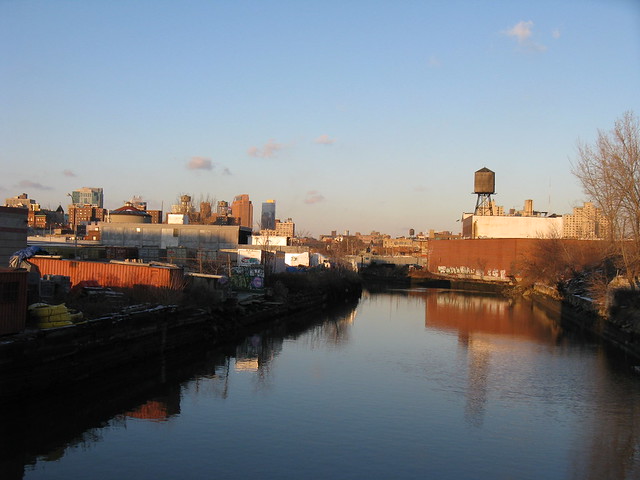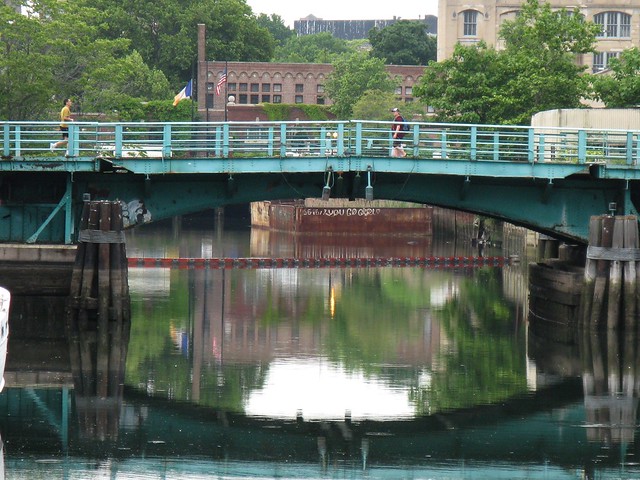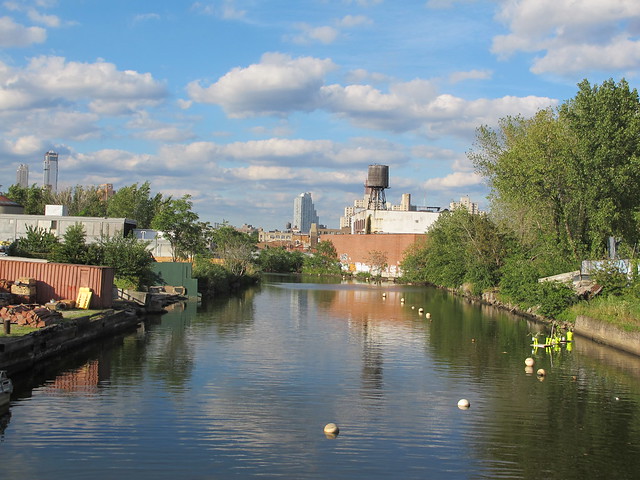From 2008's City Planning Gowanus Draft Rezoning Proposal
Pratt Center's Draft Timeline For "Gowanus Community Planning"
Proposed Gowanus Zoning study area
No Gowanus Planning Without Meaningful Representation:
A rather long post about a terribly important issue
With the Brooklyn real estate market soaring in the last decade, developers have been salivating over the mostly-industrial Gowanus Canal area. However, their dreams of luxury glass-clad high-rises clashes with the popular vision of Gowanus as an incubator for small businesses, light manufacturing and the arts.
Local residents have been debating the merits of one over the other with much fervor. The conversation became more divisive when, in November 2008, New York City Department of Planning Commissioner Amanda Burden came to the community to introduce her agency's Draft Rezoning Proposal for 25 blocks along the Gowanus Canal. The land use framework put forth by City Planning addressed issues like land use, density, bulk and waterfront access.
Though the rezoning proposal sought to maintain areas for continued industrial and commercial use,
it also allowing for a mix of uses, including residential, in certain areas currently zoned for manufacturing. According to the timeline presented by City Planning at the time, the Uniform Land Use Review Process (ULURP), the public review process of a rezoning, was due to begin in early 2009.What City Planning was envisioning for those mixed-use areas would soon become clear. In February 2009, after a contentious ULURP process and much community opposition, City Planning granted Toll Brothers, a national developer, a rezoning from manufacturing to mixed use, allowing Toll to build 470 residential condo units at the edge of the canal.
At the time, City Planning justified their decision to allow Toll Brothers to move ahead of the City's over-all rezoning by saying that the project was essentially based on their own plans for Gowanus.
By the following year, the EPA had formally designated the Gowanus a Superfund site. The agency made it clear that they would not get involved in land-use issues, but suggested that it would be helpful to the agency to know the end use of the uplands.
Then in 2011, Hurricane Sandy slammed into the area, and caused serious flooding to homes and businesses in Gowanus. City Planning made clear that the agency had no plans to resume its rezoning effort until Federal Emergency Management Agency (FEMA) had released its redrawn post-Sandy draft flood maps.
The Superfund nomination of the canal and the hurricane only offered a short reprieve from a rezoning. By this spring, Councilman Lander was ready to resume the conversation about 'planning for Gowanus'. However, at several meetings, he hinted that a rezoning should be moved forward under a new administration, and that "the upcoming transition at City Hall – with a new Mayor and City Planning Commission – presents an opportunity for a better outcome."
On August 5, 2013, State Senator Velmanette Montgomery, Congresswoman Nydia Velazquez, State Assemblywoman Joan Millman, Councilmember Steven Levin and Councilmember Lander convened a Gowanus Planning Kick-Off meeting. On the list of invited stakeholders were representatives from local organizations and neighborhood associations.***
This first step in what Councilman Brad Lander called "inclusive community planning" didn't seem so inclusive to some. The meeting was not announced, not posted in any way on the internet, not open to the general public and was closed to the press.Pratt Center for Community Development (not to be confused with the Pratt Institute) has been hired by the elected officials as the consultant that is running the planning process.
According to an overview prepared by Pratt, the goal of these planning meetings is to:
*Develop the outlines of a comprehensive, community‐based infrastructure and land‐use plan for a safe, vibrant, and sustainable Gowanus area
*Bring community stakeholders together to build as much consensus as we can around a long‐term vision for the Gowanus Canal area
*Shape the next NYC mayoral administration’s thinking about the Gowanus Canal
*Create a space for honest conversation about different viewpoints
Just recently, Pratt has held a series of small group interviews with the stakeholders who were invited to the first meeting. I was asked to participate in the group that apparently "cared deeply about the environment." The interview, held on Monday evening, was led by Elena Conte and Paula Crespo of Pratt. The questions were rather basic and covered such topics as what makes Gowanus special, what should be preserved, and what are some of the infrastructure issues.
*Shape the next NYC mayoral administration’s thinking about the Gowanus Canal
*Create a space for honest conversation about different viewpoints
Just recently, Pratt has held a series of small group interviews with the stakeholders who were invited to the first meeting. I was asked to participate in the group that apparently "cared deeply about the environment." The interview, held on Monday evening, was led by Elena Conte and Paula Crespo of Pratt. The questions were rather basic and covered such topics as what makes Gowanus special, what should be preserved, and what are some of the infrastructure issues.
(FROGG, though invited, did not send a representative because the group put into question the validity of the process.)
The group quickly seemed to reach consensus that before moving ahead with any re-zoning, a health study and a hydrological study were needed to investigate the health effects of exposure to the environmental hazards in Gowanus, and to evaluate the effect of new development in this flood prone area. We also felt that we first need assurances that the City Of New York will pay and follow through on the EPA-mandated retention basins that will help reduce the Combined Sewer Overflows and improve water quality in the canal. Without these studies and without the retention basins, planning more housing in Gowanus seemed "recklessly premature."In the coming weeks, Pratt Center will compile the information from these interviews and will then host a series of three public meetings. The first one is scheduled for Thursday, November 14th. (The time and place has not yet been determined. As soon as I find out, I will post the information.)
Personally, I remain very skeptical of this entire 'Gowanus planning' process and doubt that the community will have a true say or vote in the outcome. Though I appreciate the opportunity to weigh in on the area's future, I can't shake the suspicion that my participation in these meetings only serves to rubber-stamp a re-zoning plan that has already been chosen by our politicians and by developers.
As far as Brad's suggestion that planning under a new city administration presents the opportunity for a better outcome, he may be mistaken.
As the latest numbers indicate, Bill deBlasio will most likely be our next mayor. DeBlasio not only supported the Toll Brothers spot-rezoning back in '08, he fought hard to drive away the EPA when the agency proposed to list the Gowanus as a Superfund.
If DeBlasio wins , we can be sure that he will hand over the Gowanus Canal to developers on a silver platter, no matter what we say.
In a speech on fostering economic growth given last year, DeBlasio declared:
"I give Mayor Bloomberg tremendous credit for fighting [the EPA] tooth and nail, and I was proud to stand with him. We tried every play in the book to save the [Toll Brothers'] development deal. In the end, the EPA won out, the development stalled and every time I drive past that site I see derelict lots where we should now have hundreds of new homes and jobs.
We owe it to ourselves and to all who will come after us to take our seat at the table, and to push for a true, transparent, democratic process. We need to tell our politicians that before any new development is envisioned, we need to first find out what the Gowanus can sustain. We need to first invest in infrastructure to strengthen the businesses and the residential areas that are already there, and we need to demand new tools in City Planning's tool box. Because Gowanus is unique and deserves solutions that are just as unique.

















